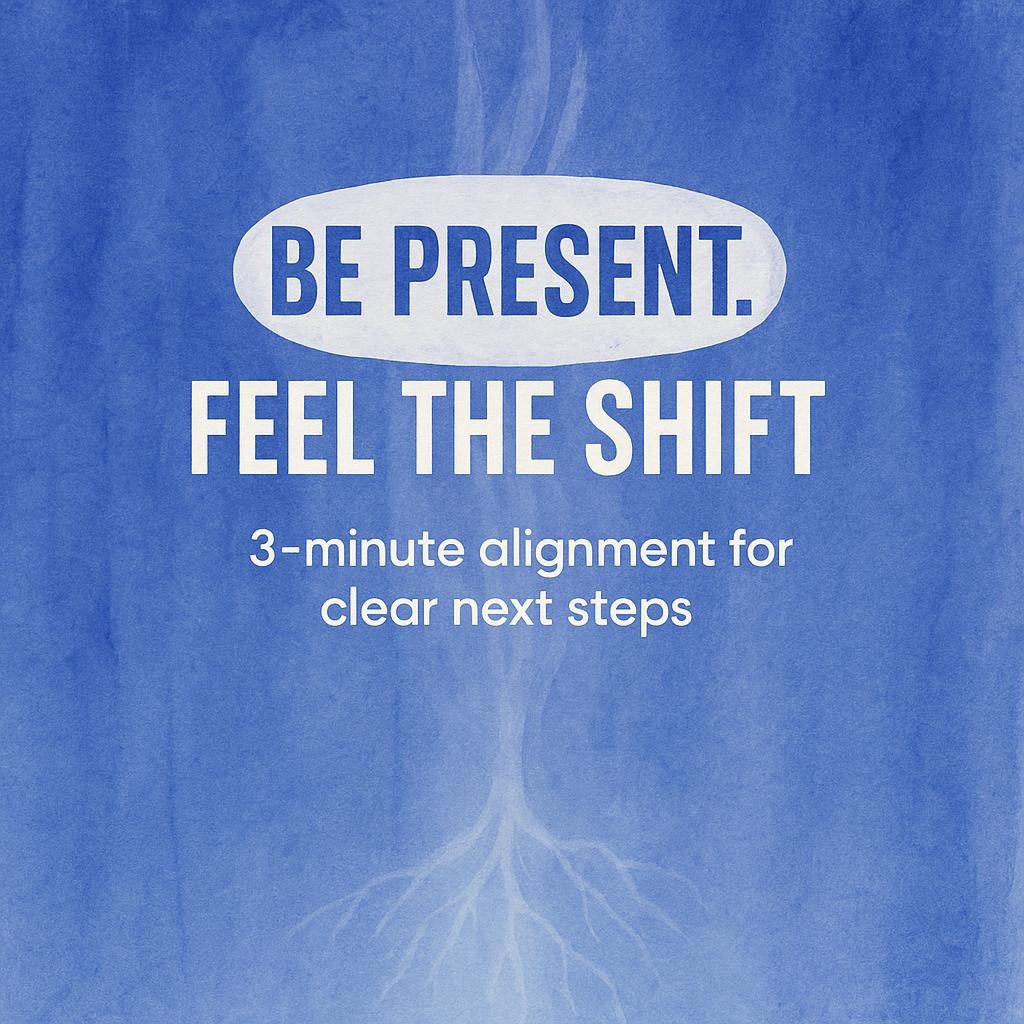Present Time Power: The 3‑Minute Alignment That Stops Overthinking
When your mind spins, you do not need a perfect plan. You need presence you can feel. In Karen Lee Cohen’s Let’s Be Peace: 20 Unique Paths to Healing Yourself and Spreading Peace in the World, intuitive healer Kumari Mullin teaches a simple, strong sequence, call your energy back to the present, then ground, and wait for the felt shift. Thinking “Present” alone is not enough. As Kumari says, “You think it until you feel it,” and that is what changes your state .
Why this presence practice calms spirals
- Your attention is scattered when you worry about the future or replay the past. Kumari names what is actually happening, your spiritual, mental, emotional, and physical bodies are not aligned here and now. Clarity returns when you call each one back, on purpose, in this moment .
- The body must register the shift. “If you just say, ‘Present,’ it doesn’t quite do it.” You gather your energy until you feel a real change, not just a thought about change .
- Grounding locks it in. After you collect your energy, focus at the base of the spine and connect down into the Earth, with the intention to stabilize and center. You can do this anywhere, even in the car. You do not need a device to reconnect your system to steadiness .
Peace does not start in the mind. It anchors in the body and is expressed from the heart. If you stay only in thinking, you will not be able to be the expression of peace in action .
The deeper purpose behind the practice
Let’s Be Peace is practical. When you are centered and grounded, you can be responsive instead of reactive, you can see the highest vision for everyone in the room, and you can help a hard moment turn into a better outcome . Cohen’s curation highlights a steady message, your inner guidance is real, and you can learn to trust it. “We were all built with our own GPS system,” she writes, a reminder to love and trust yourself as you make choices that support your health and peace .
Here is how to try it, in a few minutes
Record these words into a voice memo and play them before a meeting or any time you notice loops. You will be paraphrasing what is in the book so you can feel it in your body, not just think it.
- Sit or stand with ease. Take one gentle breath.
- Say, I call my spiritual body back to the present. Pause and notice.
- Say, I call my mental body back to the present. Pause and notice.
- Say, I place my emotional body in the present. Pause and notice.
- Say, I bring my physical body into the present. Wait for the click, a real sensation that your energy has gathered here and now. Remember, “You think it until you feel it” .
- Now ground. Focus at the base of your spine. Intend to connect down into the Earth, steady and supported. Let your system settle .
Use this simple sequence anytime. Kumari teaches that managing your energy, thoughts, and emotions changes the signal you broadcast. Your quiet presence can help others settle, even without words .
A pre‑meeting routine that eases nerves and improves outcomes
- Step out or close your eyes where you are for a short pause.
- Call each body back to the present until you feel it, then ground through the base of your spine. This shifts you from reacting to responding, which helps you see the best way forward together .
- Add a brief quiet minute. Set a simple intention to be the expression of peace. Even five unplugged minutes builds the habit of presence in the body, not only the mind .
If you like pairing breath with presence, the book offers a direct cue, breathe peace in, breathe out what is not peace. Holding the word peace as you inhale and releasing fear or irritation on the exhale is a strong daily practice, morning and night . For a structured morning breath, you can also read our related piece, 4‑7‑8 Breathing for Morning Calm: Breathe Peace In.
Hidden gems that change how you decide
- Accurate inner asking starts in present time. You can ask your body what it needs only when you are actually here. If you are split between past and future, the signal is scrambled .
- Grounding is portable. Kumari grounds wherever she is, including in the car. The practice is energetic, not equipment based .
- Daily responsibility is freedom. The anthology points to steady self‑responsibility. When you manage your state, you can bring calm into any setting and help things go better for all involved .
Real words that build self‑trust
Kumari’s language is simple and precise. “Call all of your energy back into the present,” she says, then “ground,” and feel the state change before you move on. If you only say the word present, “it stays on the mental plane.” Bringing each body home, one by one, is “a stronger collecting‑up” that works more powerfully and consistently .
Cohen’s community echoes that peace is practical. One contributor breathes peace in and sends out what is not peace to meet life as it is and find steady solutions. Over time, this one practice builds confidence and the ability to handle what comes with more ease .
Keep building your “peace stack”
The book’s promise is clear. Start small, feel for what fits, and keep going.
Take a short pause today. Call your energy back, wait for the felt click, then ground. Ask your next question from that steadier place. What would shift this week if you made this simple sequence your first move when your thoughts start to race ?
